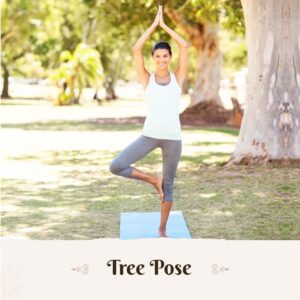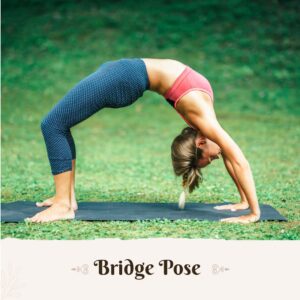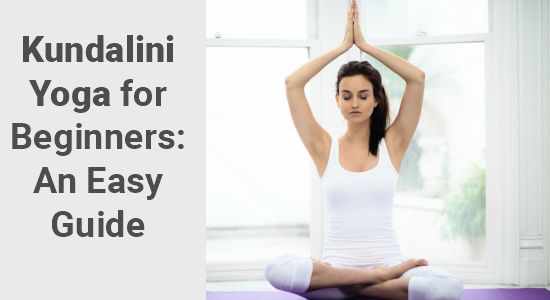Yoga for Beginners – The Secret to Mental and Physical Well-Being
Do you want to enrol in yoga for beginners’ classes to start the descent into self-awareness? Congratulations! You are on the right path. Yoga offers much more than just practising specific asanas as a downward pose or child pose. A question that you might have is – What is Yoga? It is not just physical, mental, or spiritual growth but a combination of all three elements.
Yoga is more of a way of life rather than a specific philosophy or religion. It helps you establish a connection between mind, body, and soul. You develop a deeper perspective about life apart from gaining more flexibility and strength.
If you are just starting out your journey towards yoga for beginners then it is natural to feel overwhelmed and have doubts about your capability to go through the session with ease. The journey of Yoga is one of finding inner beauty and exploring the hidden layers of your persona.
It is time you know the 7 things before choosing yoga for beginners as the new lifestyle.
Seven Things You Should Know About Yoga for Beginners Classes
As a beginner in a yoga class, it is natural for you to feel a bit confused about how and where to begin. Just remember one thing and that is to never underestimate the practice no matter how slow you are going.
Let us now understand the seven things you should remember before starting the yoga for beginners class.
1. You Would Not Remain a Beginner Forever

One thing that you should always remember during the yoga for beginners class is everyone begins as a novice. With regular practice, you gain more experience and level up from a beginner level to intermediate and finally an advanced practitioner of this sacred art.
2. Breathing is Important

If you are just starting out the yoga for beginners class and practicing asanas without the right breathing technique then it would not yield the best results. You should stop the practice, reconnect with a steady breath flow, and practice to truly enjoy the benefits that a specific class offers.
3. The Physical Body Stores Emotional Energy
Your body stores emotional energy in the hips and shoulder area. The regular practice of yoga helps you release the tension and open those areas which can be quite an uncomfortable experience.

Never ever suppress the hidden emotions even if you feel like crying or angry. Experience the feelings and let them go to truly benefit from yoga for beginners’ sessions.
4. Get Ready to Embrace Yourself

The yoga for beginners session helps you understand in-depth the connection between mind, body, and spirit. You have the opportunity to show your authentic self to the world and share with them your awesomeness.
5. Don’t Underestimate Shavasana

Although after yoga for beginners class you might feel that Shavasana is just laying down quietly on the mat. The Shavasana helps calm down your nerves and get the body in a relaxed state. You get to completely refresh the body and mind after practising each asana.
6. Comparison Kills the Progress
As stated above, you are practising yoga for your own reasons. It is your body and mind that change with constant practice sessions and not the neighbours. Looking up to check out who is practising the asana to perfection is nothing but comparing with how you are performing.
You should listen to a teacher and concentrate on your own practice rather than feeling bad about not performing it correctly the first time.
7. Performing Tough Postures Does Not Make You a Yogi
Children would be the best yogis if it was all about taking only flexibility into account. The level of flexibility you achieve does not represent the level of experience in yogic practices. You need to consider other factors as keeping the mind focused, and controlling irregular breathing.
Practising yoga for beginners does not require you to sign up for costly health club memberships. There are a total of 300 different positions when it comes to practising yoga on a physical level so it is not that easy to narrow down. Inculcating the practice of a few of these helps you remain mentally and physically fit.
6 Yoga for Beginners Poses You can Practice
Let us now concentrate on the top 6 yoga for beginners poses you can practice with ease.
1. The Mountain Pose

The Mountain pose is the base of all the yoga poses as it offers you a sense on how to keep your feet on the ground and feel the earth below. The mountain pose is the best yoga for beginners pose that you may think is all about just standing still but there is a lot that goes on.
- Guidelines for Practicing Mountain Pose
- Stand with your feet together.
- Press all the ten toes and spread them open.
- Now engage the quadriceps to lift the kneecaps through the inner thighs.
- Draw in the abdominals and up while lifting the chest and press the top of the shoulder down.
- Feel the shoulder blades moving towards each other and open your chest. Just keep the palms facing towards the body.
- Hold for a minimum of five to eight breaths
2. Planks

Practising this yoga for beginners pose helps you create balance with hands and at the same time use the entire body for support. It helps you provide more strength to the abdominal muscles and use breathing to practice the pose with perfection.
- Guidelines to Practice the Plank
- On all fours, tuck under your toes and lift the legs off the mat.
- Slide the heels back until you form a straight line of energy from the head to the feet.
- Now engage the lower abdominals and draw the shoulders down and away from the ears.
- Pull the ribs together and take deep 8 to 10 breaths.
3. The Tree

If you are new to practising yoga for beginners and find it hard to maintain balance and clarity throughout the session then the Tree pose makes that a possibility. You learn to balance the body by standing on one foot.
- Guidelines for Performing the Tree Pose
- Start by keeping your feet together and place the right foot on the inner thigh of the left foot.
- Press your hands in prayer and find a spot to keep a steady gaze.
- Hold the position for 8 to 10 breaths and then change sides.
- Lastly, make sure you are not leaning on the standing leg to keep the abdominals engaged.
4. The Bridge Pose

The perfect pose if you are into yoga for beginners’ sessions and want to stretch the front and back body.
- Guidelines for Practicing The Bridge Pose
- Lie down on your back and place your feet hip-width apart.
- Press firmly on your feet and lift your butt off the mat.
- Interlace your hands together and press the fists down to the floor by opening your chest more.
- Hold at least 8 to 10 breaths.
5. Downward Facing Dog

The downward-facing dog yoga for beginners pose helps you stretch the entire body.
- Guidelines for Practicing the Downward Facing Dog
- Come on all fours with your wrists under the shoulders and knees under the hips.
- Tuck under your toes and lift the hips off the floor while drawing them back towards the heels.
- Make sure to keep the knees slightly bent if hamstrings are tight else kept it straight and keep your hips back.
- Walk your hands forward to find the right length.
- Now, press firmly through the palms and rotate the inner elbows towards each other.
- Breathe in the abdominals and keep the legs engaged to prevent the torso from moving back towards the thigh.
- Hold a minimum of 5 to 8 breaths.
6. Seated Forward Bend

It is important that you include the Forward Bend in yoga for beginners’ practice to provide elasticity to hamstrings, upper and lower backside. The seated forward bend is the perfect yoga poses to open the body and breathe in an uncomfortable position. In case you feel any discomfort or pain then stop the practice right away.
- Guidelines for Practicing the Seated Forward Bend
- Start in a sitting position with legs together, feet firmly placed, and not turning in or out.
- Lift your chest and start hinging forward from the waist.
- Engage the lower abdomens and imagine the belly button moving towards the top of the thighs.
- Practice a maximum of 8 to 10 breaths.
- But that is not all as yoga for beginners offers many benefits apart from helping increase your level of flexibility.
- Advantages of Yoga for Beginners
Inculcating the practice of yoga for beginners in daily routine helps you become mentally, physically, and spiritually mature. Let us look at the range of benefits that yoga offers.
Physical Advantages
Yoga offers you multiple benefits when it comes to keeping your body fit. Given below are five such advantages;
1. Improved Flexibility
There is no compulsion for you to be flexible before you start the journey to learning Yoga. It is a process of growth in which you need a lot of patience. Rest assured with regular practice your body develops flexibility.
2. Protects the Spine and Improve Posture
The regular practice of yoga for beginners lets you develop strength in the back discs. It also assists with curves in the spine caused due to constant slumping posture.
3. Releases Tensions in the Limbs
As you start practising yoga on a regular basis, it lets you know where the body is holding tension. You can easily release tension in the wrists, arms, and shoulders with yoga.
4. Increased Muscle Tone and Strength
With yoga, you get the chance to develop strength and balance it with increased flexibility.
5. Improved Blood Flow
The practise of yoga for beginners helps send more oxygen to the body cells and that, in turn, helps with improving the practice.
However, the advantages of yoga go far beyond just improving your physical flexibility.
Psychological Benefits
Yoga has a host of psychological advantages that helps you enjoy a peaceful existence and live a life blissfully. Let us find out.
1. Helps You Focus
An important aspect of yoga for beginners is it helps you focus on the present and remain in the moment.
2. Better Self Esteem
With the regular practice of Yoga, you start experiencing positive feelings as forgiveness and gratitude. Regular yoga for beginners’ practice helps you work on other aspects of life.
3. Increased Inner Strength
Keeping yourself focused during the yoga session helps develop inner strength and remove the negative things from life.
Yoga offers you thousands of benefits. The only requirement is you practice each asana with proper breathing and technique. As a first-timer in yoga for beginners, you are bound to have some expectations. Read on to know how you can inculcate yoga practice as a first-timer.
Tips to Inculcate Yoga for Beginners as First-Time
The very first session of yoga for beginners is a bit confusing and overwhelming. However, keeping these 6 tips will help you make the best of each session.
1. Start with Acceptance
You should understand that Yoga is more than just practising specific postures. The very word means union and that includes a union of mind, body, and soul in all aspects of life. You develop the capacity of disintegrating the difference between thoughts and present state of mind.
2. Understand the Core
Yoga for beginners is not just about increasing flexibility or bending the spine into different shapes. It is more about breathing, discovering your inner self via meditation, and leading a life free of stress and anxiety.
3. Learn to Stay Still
We all know how hard it is for you to stay still. You would rather run around and be busy rather than sit completely still. Yoga can help you remain still even during a stressful situation.
4. Master Basic Yoga Poses
Once you are ready to practice yoga for beginners then make sure to gather knowledge of basic yoga postures. There are some basic poses you can practice such as downward dog pose, child’s pose, or Shavasana that you can inculcate in regular yoga practice.
5. Let Go of Expectations
Yoga helps you develop gratitude and that leads to a decrease in expectations. With regular practice of yoga for beginners, you learn to let go of expectations.
6. Notice the Breathing
Although one yoga session would provide you with a completely different breathing technique it is all the same. You need to develop awareness during breathing by paying attention to the inhale and exhale pattern of air.
Sometimes you are just not able to find the time from the busy schedule to practise yoga for beginners at a yoga studio or with a private yoga teacher. You need not worry as there are some pretty simple tips to help you kickstart the journey to practising this sacred art at home.
Also Read: Why You Should Join Yoga Teacher Training in Rishikesh?
6 Tips to Practicing Yoga for Beginners at Home
Busy office schedules and specific personal problems often prevent you from starting yoga for beginners’ practice. Do not worry as we have the perfect tips to help you practice from the comfort of home.
1. Get Some Yoga Accessories
The first thing you need to purchase to kickstart the journey towards yoga for beginners is a non-slippery mat. The yoga mat has to be of good quality and suit your needs. You can also include yoga blocks to perform tough yoga poses with ease. Make sure to purchase the right yoga accessories.
2. Regular Practice is the Key
Although you would get the same benefits of practising yoga even once a week three times in a week is simply great. To achieve the best results with yoga for beginners you need to regularly practice each asana without thinking too much about failure.
3. Enjoy the Time
Yoga practice is not like lifting heavy weights at the gym but letting your body glide effortlessly from one asana to another without any issues. Enjoy the session so yoga for beginners practice is one that you should look forward to and not run from.
4. Find Your Yoga Zone
In case you have extra space in the house to devote to the practice of this sacred art then make sure space is left exclusively for yoga for beginners sessions. Try to find a place devoid of any noise or unnecessary clutter with as much space as possible.
5. Practice with Safety
Make sure to know the boundaries to which your body can bear the initial discomfort of yoga practice. You need to consider specific body parts like hips, spine, neck, and knees while practising the different yoga for beginners postures.
6. Relax with Savasana
Do not forget to give both body and mind enough time to recuperate after a yoga session. The nervous system needs time to assimilate the benefits of yoga for beginners‘ practice. It will help the body get used to the discomfort in the long run and also keep the mind focused during practice.
The Conclusion
Including a session of yoga for beginners in the daily schedule helps you gain physical and mental agility. Yoga postures leave a positive effect on different parts of the body including better control over emotions, increased memory power, and developing inner well-being.
Read more: Detailed Syllabus For 200 Hour Yoga Teacher Training
FAQs
Ques 1) Which yoga is best for beginners?
Ans) A yoga style that completely focuses on clearing the basics of yoga practice. Moreover, make sure you are introduced to different yoga practices like meditation and deep breathing. A perfect yoga style for beginners could be Hatha yoga. Make sure you stick with it for years until you become a master.
Ques 2) Can I teach myself yoga?
Ans) Yes, you can! The most important thing you need to keep in mind is to learn the perfect form of practising different yoga poses. Make sure you get the required help from a certified yoga trainer. Further, you need to make a routine according to the level of your practice. Be consistent until you perfectly do a yoga pose without any hassle.
Ques 3) What is the most gentle yoga?
Ans) Yin yoga is one of the most gentle yoga forms you can go with. The pace is slow and it focuses on deep tissue massage. Hence, you might not be able to calculate its effectiveness from its physical impact. However, studies show that regular practice of yin yoga improves tissues, ligaments, and muscle fibres to a greater degree.









